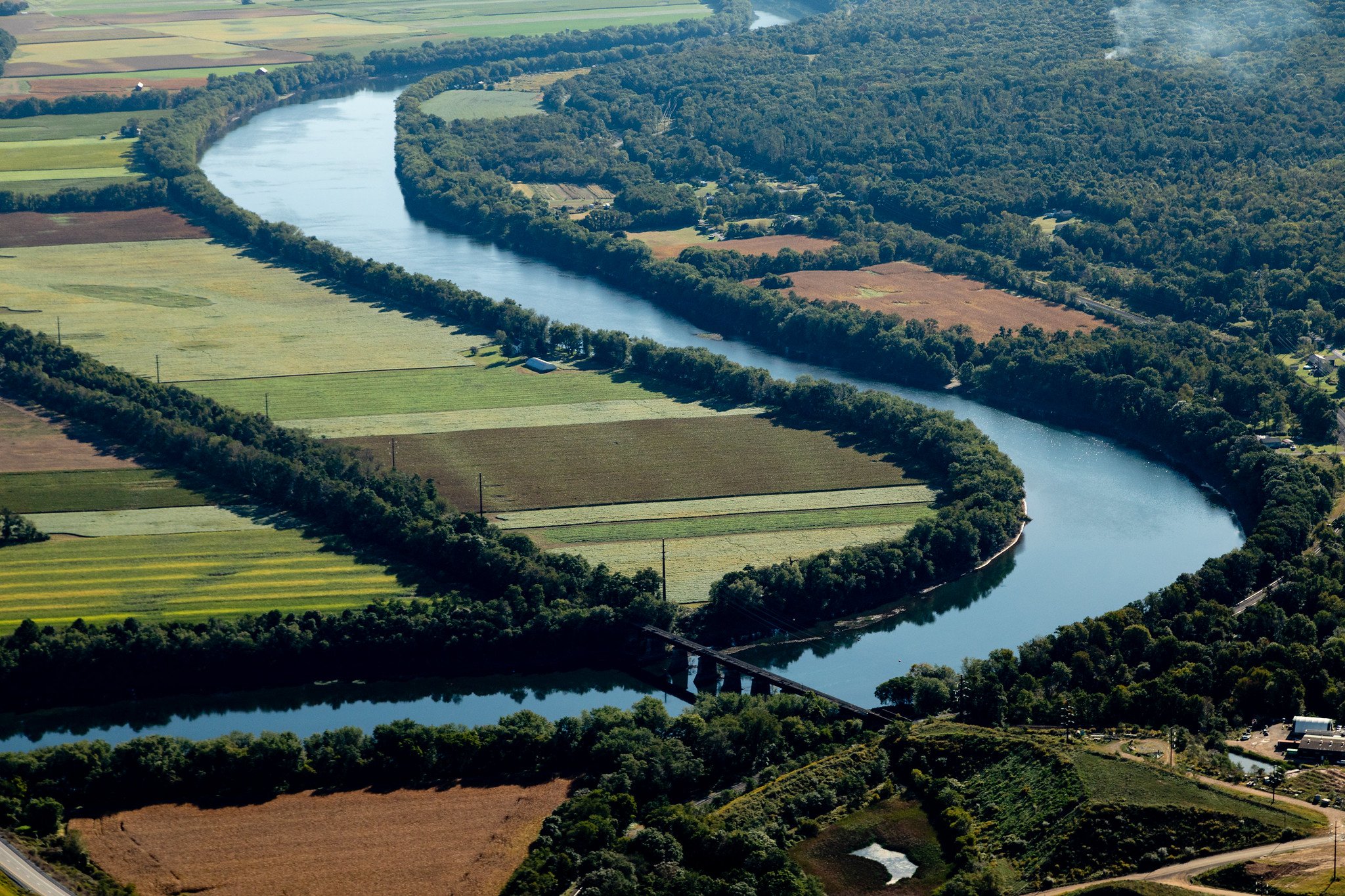Pennsylvania
The people have a right to clean air, pure water, and to the preservation of the natural, scenic, historic and esthetic values of the environment
Article 1 Section 27 of the Pennsylvania constitution
The central region of Pennsylvania, encompassing more than 50 perfect of its landmass, is characterized by the prominence of the Susquehanna and Potomac watersheds- two vital river systems essential to both the Commonwealth’s and Chesapeake Bay’s economic and ecological integrity. The Susquehanna River begins near Cooperstown, New York, and flows through Pennsylvania cities likes Wilkes-Barre and Harrisburg before reaching the Chesapeake Bay in Havre de Grace, Maryland. Fed by numerous tributaries, the Chesapeake Bay watershed is influenced by cities like Scranton, Williamsport, Lancaster, and York.
Since the signing of the Chesapeake Bay Agreement in 1983, Pennsylvania has been committed to collaborating with state and federal partners to comprehensively address the sources of pollutants throughout the Bay watershed. Pennsylvania plays an outsized role in this process, with the Susquehanna River alone contributing half of the freshwater flowing into the Bay daily. Unfortunately, this also inludes the discharge of excess nitrogen, phosphorus, and sediment downstream, leading to harmful outcomes such as algal blooms and dead zones. The largest sources of these pollutants in Pennsylvania’s rivers and streams come from nonpoint source pollution like agriculture and stormwater runoff.
State Lead
PULL CODE FOR MICHAEL
Monthly Call
The Pennsylvania State call is the third Thursday of the month at 1:00 p.m.
Pennsylvania’s 2024-25 Clean Water Legislative Briefing Book
The Pennsylvania Clean Water Legislative Briefing Book examines a wide array of issues plaguing the Keystone State's waterways and provides a variety of solutions and investments to leave a legacy of clean water to future generations. This resource is particularly relevant given that while Pennsylvania has the highest density of stream miles per acre of any state in the continental United States, one-third of stream miles are listed as impaired and unsafe for their intended use.
Now in its third edition, the Pennsylvania Clean Water Legislative Briefing Book is designed as a tool to educate state legislators, media, and the general public on the most urgent clean water needs in the Commonwealth. Whether focused on safe drinking water, supporting farmers, or addressing pollution from abandoned mines, each of the legislative requests in the book highlights a return on investment in one of our most precious resources—our rivers and streams.
With production made possible by the Foundation for Pennsylvania Watersheds, the briefing book was spearheaded by the Choose Clean Water Coalition, Coalition for the Delaware River Watershed, and PennFuture.
Below, find a webinar featuring writers from the Briefing Book introducing the resource.








